book review

EVEN AFTER 200 years, Henry David Thoreau continues to be a controversial (and, to some, annoying) figure. In a 2015 New Yorker article titled “Pond Scum,” Kathryn Schulz eviscerates the 19th century author of Walden, describing him as “self-obsessed: narcissistic, fanatical about self control.”
Schulz is not alone in her criticism. In Thoreau’s own beloved village of Concord, Mass., he was attacked for being a hypocrite because he would slip away from his hand-built cabin in the woods to enjoy hot meals and drop off his laundry at the family home. This after he had brazenly declared himself self-sufficient. To make matters worse, he thundered against alcohol, gluttony, and sex in Walden, just as many were happily putting Puritanism behind them.
Yet Thoreau not only endures but is thriving in today’s 21st century zeitgeist. He has “come down to us in ice, chilled into a misanthrope prickly with spines,” declares Laura Dassow Walls, author of a recently released biography, Henry David Thoreau: A Life.
Walls writes of Thoreau set in a New England deep in the throes of change. Ever mindful of the worrisome new global economy, Thoreau sought out and wrote about those being left out and struggling. His subjects included Native Americans, Irish immigrants, and ex-slaves, who were living precarious lives along Walden Pond. Perhaps his interest stemmed from the fact that, for years, Thoreau’s own extended family lived a life of penury, according to Walls, before the small pencil factory they ran in their backyard prospered, making them comfortable during Thoreau’s adult years.

IMAGINE A gathering of thoughtful American Christians, of diverse backgrounds—from Greek Orthodox to Pentecostal—and each with some experience of the conflict between the Israelis and Palestinians. If you could record their conversations, it might be the beginning of the book that is here before us.
A Land Full of God is an essay collection compiled by Mae Elise Cannon, executive director of Churches for Middle East Peace, to show a range of opinions about the Israel-Palestine conflict in the American church. The writers share a general understanding that peacemaking is the only way forward. Some admit they are exhausted by this conflict. Many express despair over the extremist voices that seem to push the U.S. church around. And a few have suggestions for what might make a difference.
In one of the book’s liveliest essays, Paul Alexander sums up key points: 1) Israel must end its military occupation of the Palestinians and be less violent. 2) Palestinians need to recognize the state of Israel and stop vilifying Jews. 3) Christians need to give a rest to appeals to eschatology in this entire mess. Alexander sounds exasperated and pragmatic, feelings many of us share.
If you’ve had much contact with this topic, it is impossible to read such a book with any neutrality.

TA-NEHISI COATES is an atheist, but in We Were Eight Years in Power he atones for sin. In a 2008 article about Bill Cosby for The Atlantic, Coates failed to thoroughly report on the sexual assault allegations brought against the comedian, only mentioning them briefly. On page 12 of We Were Eight Years in Power, Coates repents. “That was my shame,” he writes. “That was my failure. And that was how this story began.”
By “this story,” Coates means his ongoing career as a correspondent for The Atlantic, during which he has received a MacArthur genius grant, a National Magazine Award, and several other honors for his writings on race in America. Coates is one of the nation’s most popular living chroniclers of the plight of African Americans. But despite that, he is acutely aware of his failings.
We Were Eight Years in Power is both a collection of Coates’ best articles published by The Atlantic and criticism of those pieces. Prefacing most of the articles are short essays by Coates about the stage of life he was in when he wrote each article, the pieces’ triumphs, and their flaws. With sometimes savage specificity, the essays map the evolution of Coates’ writing skills as well as his personal foibles. At the same time, the articles themselves document the flaws of the United States and how the country consistently does wrong by its African-American citizens in favor of doing more than right by its white citizens.
Coates’ writing process is a metaphor for the social corrective he pursues: the abolishment of white supremacy.
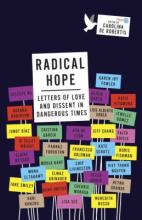
“TO MY FELLOW and artists; to my fellow readers and lovers of art; to my fellow believers in peace and a more perfect world ...”
Thus begins Viet Thanh Nguyen’s contribution to Radical Hope—“a collection of love letters in response to these political times.” The Pulitzer Prize winner (for The Sympathizer) goes on to describe his dreams for a new model for our society, one that includes prophecies, poets, and the people: “Those of us who would tear down walls and eradicate borders, and who believe in both inclusion and equality, need to use our talents to help build a coalition.”
The dozens of letters in Radical Hope illustrate the dreams of this diverse community of writers. Luis Alberto Urrea asks, “What if there is no Other? What if there is only Us?” Katie Kitamura writes of a future in which her daughter grows up believing in the generative power of language. Many of the writers pen poetic reflections on the beacons of light and love who have guided them, looking to the past to bring enlightenment into the next journey. In the final letter, Cristina García imagines the world seven generations from now, asking what that will look like and wishing upon her great-great-great-great-great granddaughter “adventure and loving protection.”
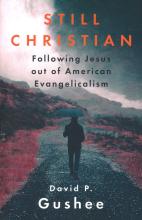
“THERE IS SOMETHING off-putting about a nonfiction story in which the I is infinitely more sinned against than sinning,” opines Phillip Lopate, the dean of nonfiction literature.
David Gushee’s autobiographical Still Christian may fall short in chronicling his own “sinning,” but this is ultimately redeemed by his self-reflective amusement at surviving the “skin of my teeth” narrative. After all, he notes that he is an ethicist who has “flexibility about convictions,” which is confession enough. As with many good books, the title masks a more accurate if less marketable headline. In Gushee’s case, it might be: “Still Baptist: A Southerner grapples with his diary.”
Gushee is an ethics professor at Mercer University, a church pastor, and the recently elected president of the American Academy of Religion. Reading this worthy extended essay on a Baptist life, I felt we were traveling together in an action movie where the hero barely escapes from an exploding planet. In Gushee’s story, those religious flames pushed us forward toward safety, merely scorching our heels, rather than pulling us backward into the lava-like funnels of religious fervor.
This was not Hollywood, however, but real life for Gushee and millions of us left orphaned by an originally capacious Southern Baptist planet that had, by 1993, imploded of its own weight. This ecclesial destruction revealed that the often-quoted Baptist ideal of “sole competency to interpret the scriptures” did not make room for the institutional continuity that “moderates” sought, but did allow for a fundamentalist (even neo-Calvinist) takeover.
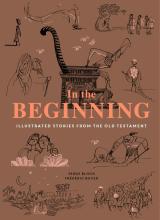
IT HAS BEEN A TIME of shadows and warnings, bursts of violence and the creeping stain of betrayal. Falsehoods, at first a dripping faucet over a tin bucket—the hint of failing seals and valves, the promise of future corrosion—have become a downpour. Disintegration seems the rule.
Where to find a true story, one that endures?
Scripture might seem the logical turn for a Christian. But I know my weaknesses. Left to my own devices, I cherry-pick favorite verses, I swerve away from difficult passages. I rarely read anything in the Old Testament except the prophets—and those while too often presuming I stand with them, already on their side, and God’s: Nothing for me to hear, except the echo of the woe and correction I’d like to dole out to others. A situational loss of hearing that is a sure path to perdition.
But then I was introduced to an unusual portal to the holy word, one that easily charmed its way past my conscious and unconscious scriptural biases: a 500-plus-page coffee-table book whose bronze cover is adorned with line drawings of people who are at turns winsome and ominous. With title and highlights in fluorescent orange, the design is reminiscent of some DayGlo-kissed whimsy from the 1960s. In the Beginning: Illustrated Stories from the Old Testament (Chronicle Books) retells, through images and spare prose that is both fresh and respectful of the scriptural sources, core stories of the Judeo-Christian tradition, from creation and the Garden of Eden to Daniel in the lions’ den.

THIS IS A BOOK I wish I could have had when I was 15.
While there are numerous (and much needed) stories about the immigrant experience, Mitali Perkins’ young adult novel, You Bring the Distant Near, fully captures nuances of relationships, racism, death, family, feminism, sexism, and love in profound ways. It’s a story that’s not often told with such clarity and depth.
Reading this book was like staring into a mirror and seeing my reflection—sometimes surprised, sometimes in tears, and other times nodding in understanding.
It weaves together the lives of five women from three generations—Ranee, Tara, Sonia, Anna, and Chantal (nicknamed Shanti)—and focuses on Tara and Sonia’s journey from when they were teenagers to when they were mothers with successful careers.
Ranee is a strong-willed, stay-at-home, Indian (Bengali) immigrant mother who comes to the U.S. with her husband for opportunity. She is the mother of Tara and Sonia. Tara is charming, peacemaking, and theatrical in the best ways. She is a shape-shifter of sorts, able to fold into any culture by studying and learning what traits she needs to be the most ideal version of that culture (when she arrives in the U.S. she emulates Marcia Brady). Sonia is fiercely intelligent, outspoken, and a brilliant writer. Anna is Tara’s creative, brazen daughter who is proud of her Indian roots. Shanti is Sonia’s athletic and easygoing daughter who loves math and dance.
Each woman represents a different side of femininity that together shows the reader the importance of multiple, empowering narratives.

SOUTH ASIAN-AMERICANS, such as Siddhartha Mukherjee and Atul Gawande, have recently made a dent in the white male hegemony that has reigned in medical writing for general audiences. Haider Warraich is following in their path with this new book on death and dying.
With liberal use of anecdotes from a medical residency in Boston, Warraich snaps the reader out of sanitized TV portrayals or even hospital experiences of death to induce a more authentic confrontation, one most would seemingly rather avoid at all costs. (Witness church members who no longer have funerals but “celebrations of life” and “homegoings,” often after enduring dehumanizing and futile end-of-life interventions.)
But is lack of knowledge about the mechanics of “modern death” in a technological society at the core of the problem, as Warraich seems to think? Is his thesis correct that our fear of death is greater than ever? Can social media posts by the dying overcome these problems?

APOCALYPSE IS in the air. Perhaps it was the eclipse in August, or the always accelerating churn of foreign and domestic scandal in the news, or the looming threat of climate change. Or perhaps people have always lived this way. But the world feels weighty and close to falling apart, and we start wondering how we would handle the aftermath.
When the English Fall, by David Williams (no relation), examines that possibility: a post-apocalyptic novel about a catastrophe that makes the low-tech, community-minded lifestyle of the Amish the only viable one. We witness the immediate aftermath of the modern life of the English (the Amish name for all non-Amish people) failing due to a solar storm; society is placed under immense stress without the ability to feed itself. In a fantastic choice, this is examined through the life of an Amish farmer named Jacob—how he adapts and the difficult decisions that he must make for his way of life to survive.
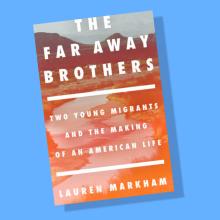
WITHIN THE FIRST pages of The Far Away Brothers: Two Young Migrants and the Making of an American Life , it becomes clear that Lauren Markham understands the complexities of immigration to the United States and has personally worked with immigrants stuck in its tangled web. In a journalistic style, she reports the story of teenage twin brothers Raúl and Ernesto, fleeing gang violence in El Salvador, hoping to find safety and new opportunities in El Norte.
Markham has worked in refugee resettlement and immigrant education for the past decade. In this book she covers all aspects of immigration in well-researched detail. But she also seems to understand that while any reader could argue immigration policy, no one can argue with the Flores brothers’ story, from the crippling poverty in rural El Salvador, where life is cheap and disposable, to the stark loneliness of their lives in the U.S., far from the comforts of family and home.
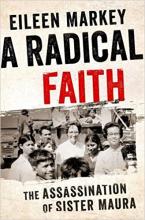
EILEEN MARKEY'S story of the life of Sister Maura Clarke reads like a Greek tragedy, progressing inexorably toward darkness. Many of us know the ending: In 1980, four churchwomen were murdered in El Salvador by national guardsmen, led by a sergeant who had been trained at the U.S.-based School of the Americas. The men raped and executed two Maryknoll sisters—Maura Clarke and Ita Ford—Ursuline sister Dorothy Kazel, and lay woman Jean Donovan, ambushing them on their way back to the people they served in Chalatenango.
Clarke is the last of the four women to be memorialized with her own book, but Markey has created the most complete work. Her beautifully sourced research ranges from family to Maryknoll archives to conversations with many people who worked with the sisters in Nicaragua and El Salvador.

Gay is a true prophetic voice. She laments her life, her trauma, and her weight. She doesn’t promise victory but speaks to the pain that so many people feel: victims and survivors of sexual violence, bisexual people, fat people, and lonely people.
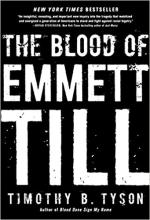
ON A HIGH PLATFORM in the National Museum of African American History and Culture in Washington, D.C., sits a glass-topped casket. The museum’s deputy director, Kinshasha Holman Conwill, has called it “one of our most sacred objects.”
The casket once held the body of 14-year-old Emmett Till, an African-American boy from Chicago who, while visiting family in Mississippi in the summer of 1955, reportedly whistled at a white woman named Carolyn Bryant at a country store. A few nights later her husband and brother-in-law kidnapped Till, beating and murdering him before fastening a heavy industrial fan to his neck with wire and throwing the body into the Tallahatchie River. The local sheriff ordered Till’s body to be buried the same day it was found. Instead, one of Till’s great uncles intervened and made sure the body was returned to his mother in Chicago.
Mamie Till-Mobley allowed photographers from Jet and Ebony magazines to take pictures of Till’s mutilated face and insisted on an open casket and public viewings. Tens of thousands filed by Till’s broken body.

DAN ZAK WAS FIRST struck by the absurdity of it all. As a reporter for The Washington Post, he was fascinated to learn that Sister Megan Rice, Michael Walli, and Greg Boertje-Obed had crossed forested hills in the middle of the night in Oak Ridge, Tenn., and reached the center of a government complex where possibly the most dangerous material in the world is enriched and stored.
Then Zak was captured by what was behind their action—the dramatic secrecy in the development of the first atomic bomb, the tragedy of its testing on U.S. soldiers and on the unsuspecting inhabitants of the Marshall Islands, the bungling bureaucracy surrounding the entire nuclear industry, and finally the hope and resilience of the resisters who work to eliminate these perilous weapons. His book Almighty: Courage, Resistance, and Existential Peril in the Nuclear Age (Blue Rider Press) is the result.
Rice, Walli, and Boertje-Obed called their action the Transform Now Plowshares, following a tradition of serious faith-inspired nonviolent actions dating back to 1980, actions often successful in reaching their nuclear targets and resulting in prison terms.
In July 2012, the trio cut through several fences—aided by malfunctioning motion sensors—at times moving through bright floodlight and past signs warning, “Deadly force authorized.” They hung a banner on one fence that proclaimed the words that were the source of their action, the injunction from Isaiah to “hammer their swords into plowshares and their spears into pruning hooks” (2:4).
They arrived at Y-12, a building that stores 800,000 pounds of weapons-grade uranium, the material that undergoes fusion when a nuclear bomb is detonated. Using traditional Plowshares action symbols, they streaked the white walls with the blood of activists, spurted from baby bottles they carried in their backpacks. They painted the building with the phrases “Woe to the empire of blood” and “The fruit of justice is peace.” They chipped away at the concrete walls with small hammers, and they waited.

“WE ABUSE LAND because we regard it as a commodity belonging to us. When we see land as a community to which we belong, we may begin to use it with love and respect.” So wrote Aldo Leopold in his ecological classic A Sand County Almanac, published in 1949. That same year, Erle Halliburton experimented with pumping a slurry of oil and sand into a wellhole in Oklahoma, patenting a new process he dubbed “Hydrafrac.” Within the next five years, Halliburton was treating more than 3,000 wells a month that way.
Short for “hydraulic fracturing,” fracking—a word now included in Merriam-Webster—is the process of drilling and injecting fluid into the ground at high pressure in order to release oil or natural gas inside. Today, thanks to recent technological developments, more than a million fracking sites dot the U.S. landscape.
The environmental vision of Leopold and the actions of Halliburton that fateful March both haunt the recent literary collection Fracture: Essays, Poems, and Stories on Fracking in America. With literary genres that range from verse to essay and fable to investigative journalism, Fracture chronicles the ecological and cultural ruptures resulting from this highly controversial phenomenon. Co-editors Taylor Brorby and Stefanie Brook Trout have put together a devastating, disturbing collection that should be read in small bits, lest you be overwhelmed.

AS THE BLACK LIVES Matter movement has shone a light on police brutality against black people across the country, the public conversation in the United States has been unable to ignore the legacy of racism that shapes many of our nation’s most vital institutions. In his important new book, The End of White Christian America, Robert P. Jones, CEO of the Public Religion Research Institute (PRRI), makes the bold claim that White Christian America (WCA)—the fertile ground that gave root to and energized the legacy of American racism—is dead. Granted, this does not mean the death of racism. But for those of us striving for racial reconciliation, the changing societal narrative that Jones offers here is a hopeful one.
Jones begins the book with a tongue-in-cheek obituary for WCA: “Although examiners have not been able to pinpoint the exact time of death, the best evidence suggests that WCA finally succumbed in the latter part of the first decade of the 21st century.” He ends the book with a eulogy for WCA that is much more serious in tone and draws upon the stages of grief named by Elisabeth Kübler-Ross in her eminent book On Death and Dying.
Jones defines the WCA as a distinctly Protestant entity, with two primary branches, white mainline Protestants and white evangelical Protestants. Jones notes that although these two subgroups are often at odds, together they comprise the “single dynasty” of WCA. “For most of the nation’s life, White Christian America was big enough, cohesive enough, and influential enough,” Jones writes, “to pull off the illusion that it was the cultural pivot around which the country turned.”

Creationist Christian tourists may soon flock to the Ark Encounter, a literal vision of Noah’s story in Genesis come to life in July as a theology-packed tourist attraction in Williamstown, Ky.
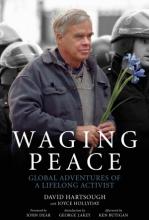
WHAT LIVES THESE two authors have lived and what lessons they can teach us! Reading David Hartsough’s lively memoir immerses us in the great peace and justice events of the last several decades. Colman McCarthy’s fascinating interchanges with high school and university students propel us into a hopeful future as we see how young minds are stretched and carry lessons learned into the world.
Hartsough’s FBI file started when he organized his first anti-nuclear protest at age 15, and it may be growing still as he directs Peaceworkers, a nonviolent training and accompaniment NGO based in San Francisco. In between are 60 years of peace work in the U.S. and the flashpoints of the world, always bringing the message of the necessity and efficacy of nonviolent direct action. In Waging Peace he relives the adventurous life of a professional peaceworker as well as the silent efficacy of his family’s tax resistance and tradition of simple living.
Whether disarming with words a knife-wielding segregationist opponent at a Virginia lunch counter, blockading with a canoe a weapons ship bound for Vietnam, or traveling to war zones, Hartsough has faithfully carried forward his commitment to nonviolence. Sometimes visiting conflict sites before they reach the radar even of other peace people, he writes of going to Cuba, Russia, Yugoslavia, and the Berlin Wall while still a college student, to Central America during the ’80s, and later to Gaza and other war zones.
In 1999, after trying unsuccessfully to persuade the world to support nonviolently the beleaguered Kosovars and thus avert a Serbian bloodbath, Hartsough attended a peace conference in The Hague. There he met Mel Duncan, and together they founded the Nonviolent Peaceforce, now the largest of several worldwide movements of accompaniment for nonviolent activists.
In California, Hartsough worked to launch the huge Abalone Alliance against the Diablo Canyon nuclear power plant and campaigned against the development of nuclear weapons at the University of California’s Lawrence Livermore National Laboratory. In this century, Hartsough was one of the first to be arrested for protesting drone warfare at Creech Air Force Base.
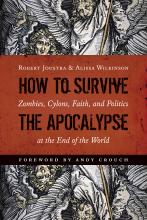
The world is falling apart.
Admittedly, the world has always been falling apart—since Christ’s resurrection, we’ve been living in the last age, and the New Testament is full of an apocalyptic expectation—but in our modern world, we seem to be spinning apart even faster. In our pop culture, either “winter is coming” or zombies are. Robots who look just like us are threatening genocide or a perverse “Capitol” is forcing our kids to kill each other. How to Survive the Apocalypse, by Alissa Wilkinson and Rob Joustra, looks at this theme in modern culture and what it might tell us about ourselves.
This is a book written by college professors, and I mean that in the best possible way. They define their terms, keep us engaged, and push us toward engaging the world like the best professors do. And, like all good professors, they are honest about their ideological approach: They are strongly neo-reformed and use Charles Taylor’s opus A Secular Age to interpret the culture that they address.
Indeed, How to Survive the Apocalypse is basically a fleshing out of Taylor’s description of the modern age (and its difference from a pre-modern era) through fictional ends of the world. Wilkinson and Joustra examine individualism and autonomy, a quest for and skepticism of authenticity, and the appropriate source of power (the questions and obsessions that Taylor sees at the root of modernity) through a half-dozen TV and movie apocalypses and dystopias, ranging from The Hunger Games to Her. These questions press all the more in our age, in which we seem to have lost the transcendent.
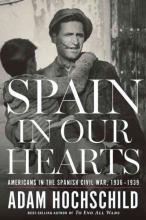
FUELED BY DEEP economic insecurity, terrorist acts, and an influx of thousands of Middle Eastern refugees fleeing their homelands, a slew of bellicose, ultra-right-wing parties throughout Europe are gaining popularity in 2016. Some are reminded of the 1930s when fascists Adolf Hitler and Benito Mussolini and communist strongman Joseph Stalin all held power, along with dictators in several smaller states.
Today’s mostly democratically led Europe, of course, is a far cry from that bloody, disastrous decade, but the real angst that prevails still gives cause for alarm and analysis. In Spain in Our Hearts: Americans in the Spanish Civil War, 1936-1939, veteran journalist Adam Hochschild takes us back to what is seen as an important prelude to World War II.
In 1936, a broad coalition of mainly left-wing parties—liberals, socialists, anarchists, and communists—narrowly won national elections in Spain. In response Spanish Gen. Francisco Franco, supported by the fascist governments of Hitler and Mussolini, launched a rebellion against the new government. The left-leaning government forces and its supporters became collectively known as the Republicans; Franco and his coalition of the military, landed aristocracy, and most of the Catholic Church hierarchy were known as the Nationalists. This conflict, a democratically elected government attempting to fight off a fascist uprising, became the focus of international attention.
Hochschild explores the passion, commitment, and dangerous “boots on the ground” actions by Americans who volunteered to fight the fascists in Spain. Hochschild has excavated a rich trove of memoirs, letters, and unpublished books that these volunteers left behind.